Note: A variation of this post was originally published at our sister site, Capiche.us.
Branding is all the buzz and has been for some time, but branding can be confusing. I hope to clear things up with this post.What’s the difference between the Napa Valley brand and the Willamette Valley brand? Both are internationally renowned, but what sets one apart from the other? What about wine regions like Southern Oregon with an emerging brand? Or others (which I won’t mention) with a weak or even negative brand?
On a producer level, what’s the difference between the Cupcake brand and the Chateau Margaux brand? And what happened to the Merlot brand after the movie Sideways?
All good questions, but first you’re probably asking what exactly is a brand? And how do you come up with your brand?
Let me answer by saying what a brand isn’t.
Your brand isn’t your logo, your colors, your fonts, your label, or your website. These are simply reflections of your brand. Furthermore, you don’t “come up with” a brand—you uncover it. It’s what is real, honest, and believable about your organization or product.
It’s your DNA.
A brand also is the sum total of all associations made with an organization, region, or product. It’s the good, the bad, and the ugly—the attributes that are called to mind when one thinks of your organization or product.
Every organization/region/product has existing brand associations it wants to emphasize, maintain, and even possibly lose. Brand development moves you from your current brand to your desired brand. And to be successful, your desired brand must be in sync with your values, vision, passion, and purpose.

Differentiation and Integration
There are two key principles of brand development: differentiation and integration.
- Differentiation suggests that the only sustainable market position is one in which you are offering something significantly different from and better than your competitors. These differentiators must evolve from current brand associations and be infused into the customer’s experience in real ways to be credible. Only through research can we can identify current brand associations and relevant differentiators—along with understanding client/customer needs and perceptions.
- Integration means all marketing communications and activities reinforce the same core differentiators. In other words, integration requires that the organization is using one clearly defined voice across the board and up and down the line.
A brand should drive marketing strategies and all business decisions and give the organization something to live up to.
Here’s where many people get branding wrong. They stop once they develop their visual/graphic identity—the colors, logos, fonts, and so on. It’s the next step that’s most critical to developing a successful brand, and every single person in your organization has a role to play. Your people bring the brand to life. They live the brand.
For example, Zappos’ entire culture is created to live its brand of happy employees, which leads to great customer service (and significant profits).
In the world of wine, you can probably list the wineries and regions that are living their brand and those that are not. A great example is Naked Winery. Their brand is clearly defined on their website:
If you’ve ever visited a Naked tasting room, you’ve seen the brand in action.
When your people are living your brand, their personal values are in sync with the organization’s. They are happier, more productive, and your best ambassadors. Involve them from the start; get clear on values, vision, passion, and purpose; walk the talk; and enjoy your success!
| SIMPLE | The more details we provide, the more vaguely we communicate |
| MEANINGFUL | Must emphasize something that matters to our target audiences |
| ACCURATE | Must truly describe the organization or product |
| REINFORCED | Strategic business decisions must enforce the brand strategy |
| TANGIBLE | Must be exhibited in clear ways in every customer experience |
Uncover Your Brand
If you are ready to uncover your brand and solidify your company culture, give us a call at 541.601.0114 or contact us today. Let Capiche help you take your organization to the next level!
When your people are living your brand, their personal values are in sync with the organization’s. Share on X


Leave a Reply